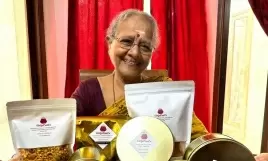‘The fault lies in the way West defines customer service’

07-September-2012
Vol 0 | Issue 1
Recently we organized a conference on Indian management in which a researcher made a presentation on comparative study of market orientation in the east and the west.
Using a scale developed by western researchers he had surveyed Indian and American consumers and came to the conclusion that the companies in the west are more market oriented than in the East.
Having lived in the US and India, I always thought that customer service is better in India than in the US and other developed countries. Since the researcher under question was a person of Indian origin settled in the US, I decided to confront him. I started with his experience of staying in hotels in India and the US. He frankly admitted that the service in India was far better than the West.
He then went on to say that in the US people can easily return the goods purchased, if they disliked the product. He was referring to the policies of retail chains like Wal-Mart, Carrefour and Tesco. I then asked him about the profit margins of these stores.
He said that the margins ranged from 40 to 60%. I pointed out the fact that Indian retail chains operate on less than 10% margins. Despite operating on such low margins, the small grocery stores offer home delivery in India.
I pointed to the fact that many shop owners will get the products delivered to the car parking area. I wanted to know whether such things can be expected in the US. He agreed that service in Indian retail system is better than the US.
Then I asked about airlines. He went on to criticize the poor service in Air India. He criticized the airlines in India for lack of professionalism. He also pointed out the fact that air hostesses do not offer consistent service in India. He was referring to the smile on the face of airhostesses in foreign carriers at all times. Indian air hostesses tend to show different emotions in their face at different times.
I explained to the visitor the difference between the clinical smile on the face of a professionally trained airhostess and the average Indian airhostess. They are trained to widen their lips to appear like they were smiling on greeting every passenger.
There is a big difference between the smile that emanates from the heart and the artificial one that comes by training. He agreed that I was right. It turned out that the Indian airhostesses offer better service than their US counterparts.
 |
|
Food getting ready at the author's favourite dhaba
|
I also explained to him about a Dhabha in the outskirts of Ranchi where I used to visit once in a while along with my friends. Every time the man at the Dhabha sees us, he would greet us warmly. As we sit on the coir cot, he would prepare my favourite chicken curry and roti.
He would serve a homely food that is very delicious. The satisfaction that I get is in no way inferior to the one I get at five star hotels. The reason for the satisfaction is due to the emotional connect that comes from the heart. He had never been to Harvard to study customer satisfaction or marketing. Treating guests nicely is in our culture; it is in our blood.
If in every sense India is better than the US, how did the researcher come to the conclusion that US organizations are better market oriented than Indian companies. The fault lies in the way West defines customer service and market orientation.
While India is known for its hospitality and has always believed in genuine concern for the guests, the West has been encouraging clinical, synthetic and artificial service styles. The worst part of it is that we are getting our marketing people trained using western methods!
Finally the researcher agreed that he had to use concepts and scales developed in the west to get his research work published in leading US journals. I think the time has come for us to develop our own concepts and publish in our own journals. It is high time that we teach a lesson or two to the West!
The author is Director, IIM, Ranchi. His Email: [email protected]
Also Read
A unique MBA teaching model
















